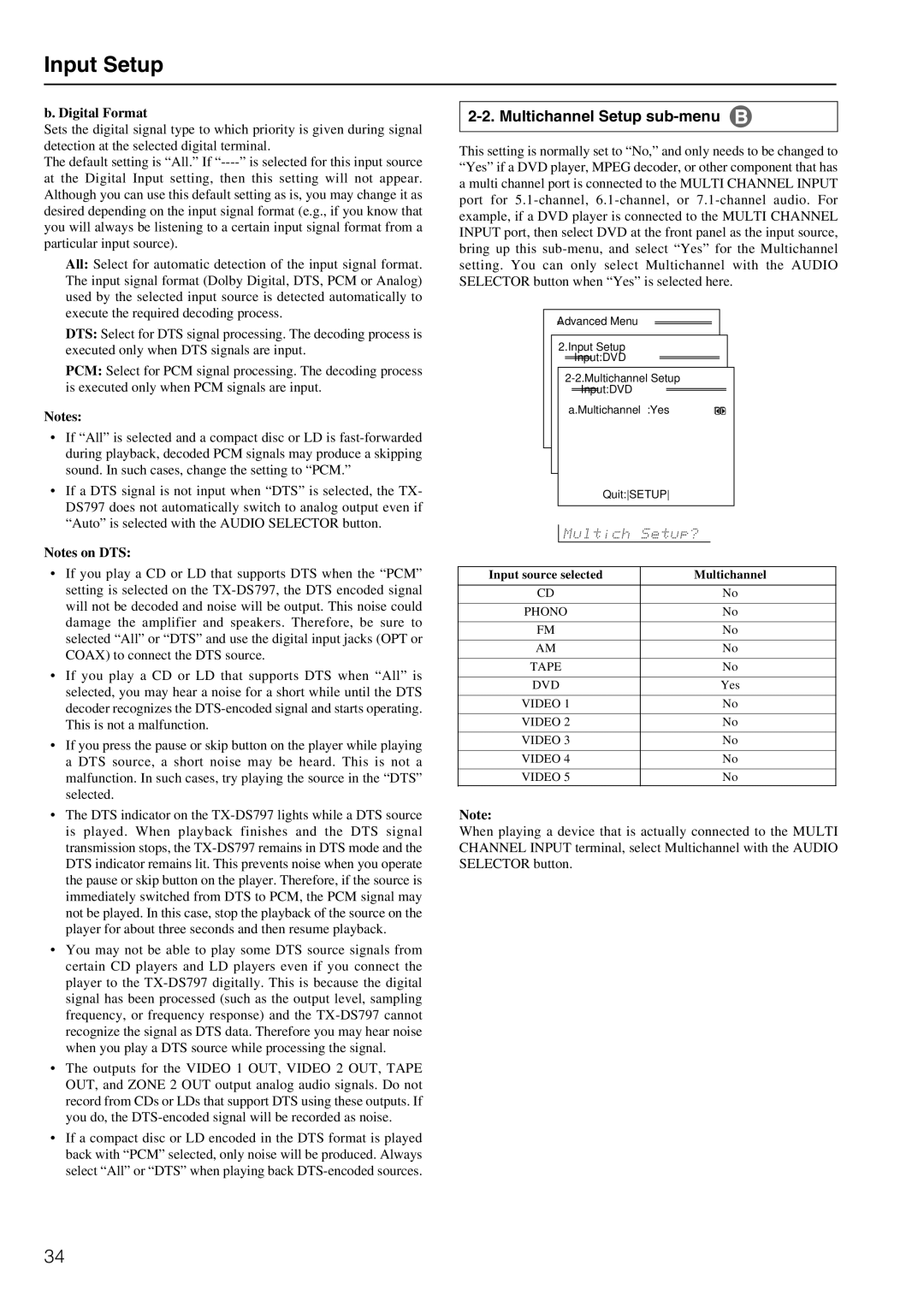TX-DS797 specifications
The Onkyo TX-DS797 is an iconic AV receiver that has left a lasting impression on home theater enthusiasts since its release. Known for its robust performance and extensive feature set, this receiver is designed to deliver an immersive audio-visual experience that can elevate any entertainment setup.One of the standout features of the TX-DS797 is its impressive multi-channel amplification system. With a power output of 100 watts per channel, the receiver can drive a wide range of speakers, providing dynamic sound that fills the room. This power is complemented by Onkyo’s Wide Range Amplification Technology, which ensures clear and accurate sound reproduction across various frequencies. The receiver supports Dolby Digital, DTS, and THX audio formats, making it suitable for both movies and music.
The TX-DS797 is equipped with multiple inputs and outputs, allowing for extensive connectivity options. It includes six composite video inputs, three S-video inputs, and two component video inputs, making it easy to connect various devices such as DVD players, gaming consoles, and satellite receivers. Additionally, the receiver features a built-in AM/FM tuner and supports recording outputs, giving users the flexibility to manage their media.
In terms of audio processing, the TX-DS797 boasts a 24-bit/192 kHz DAC, ensuring high-fidelity audio playback. The receiver also supports various audio codecs, providing users with a diverse listening experience that caters to different preferences. The inclusion of the Onkyo’s proprietary DSP (Digital Signal Processing) allows for accurate simulation of different sound environments, enhancing the immersion during movie watching and music listening.
Furthermore, the TX-DS797 is designed with user convenience in mind. Its intuitive on-screen display makes navigation through various settings and configurations a straightforward process. It also comes with a remote control, allowing users to manage their audio-visual setups from the comfort of their couch.
With a sleek and modern design, the Onkyo TX-DS797 not only performs well but also adds an aesthetic appeal to any home theater environment. It offers an excellent balance of power, versatility, and advanced technology, making it an enduring choice for audiophiles and casual listeners alike. Whether you are watching a blockbuster film or listening to your favorite music, the TX-DS797 delivers an exceptional performance that is hard to beat.

